Stand tall and supported and ready for action with a solid core. Simon Vincett suggests these exercises.
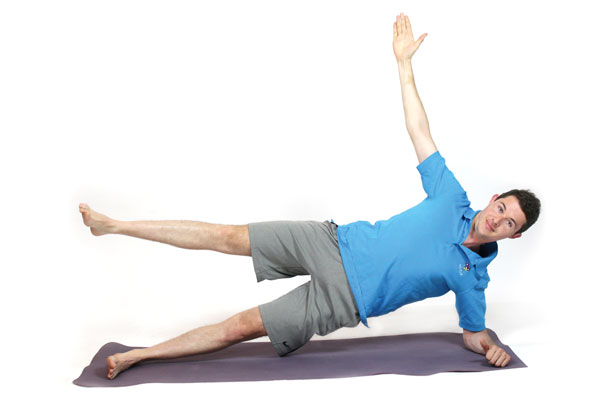
Just as aerobic exercise is important for cardiovascular health and a resistance workout is key for maintaining bone density, core-muscle strengthening is vital to provide a solid foundation in your torso. It’s from this strong base that your legs and arms can act most powerfully.
The mysterious core muscles are less obvious than other muscles we’re familiar with, such as the quads, pecs or abs, but they balance and stabilise these major muscles. They also enable a great range of motion, allowing us to twist, bend and reach with control.
Being a supported exercise, bike riding does not strengthen your core muscles. However, it does shorten major muscles such as the glutes, hamstrings and quads, which inhibits the core muscles. This creates tightness, discomfort and poor posture off the bike.
These positions are designed to be held for a period of time, to work and strengthen your muscles. Concentrating on your breathing is a great way to stay calm and to measure time. Hold each position for five, eight or ten steady breaths each and repeat them each a few times. If you do these exercises twice a week, you’ll soon find you can hold the positions for more time. At any time you want a rest, go into the kneeling forward bend.
For the best program for your individual needs, see your doctor or a fitness professional.
Staff
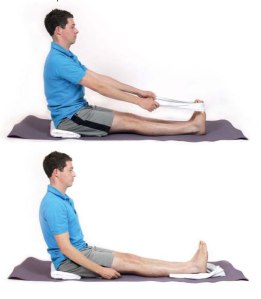
Sit with your legs straight and ankles together. You can put a rolled up towel under your knees to release the hamstrings and sit on a folded towel to sit upright more easily.
Sling a towel around your feet and sit up tall. Release your shoulders down and draw your shoulder blades in. Engage your core muscles and release the towel, trying to hold the position.
Boat
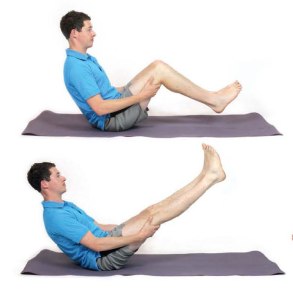
Sitting with legs straight out and ankles together, lean slightly back and lift your knees until you can support them with your hands. Roll your shoulders back and check your back is long and straight
While maintaining your long back, straighten your legs if you can. When you can do that with control, you can straighten your legs and let go with your hands.
Plank
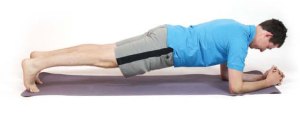
Place your forearms on the floor and walk your feet back until you are straight from shoulder to heel. Actively lengthen yourself forward through the crown of your head and backwards through your heels.
Side plank
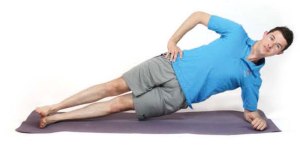
From plank, turn sideways and rest on the side of one foot, with the other foot stacked on top. Hold your hips in alignment with your head and heels. For added difficulty lift the top leg, keeping the foot parallel to the one on the ground. Then try extending your top arm above you, always maintaining the hips in line between the head and heels.
Turn to the other side and repeat.
Glute flex
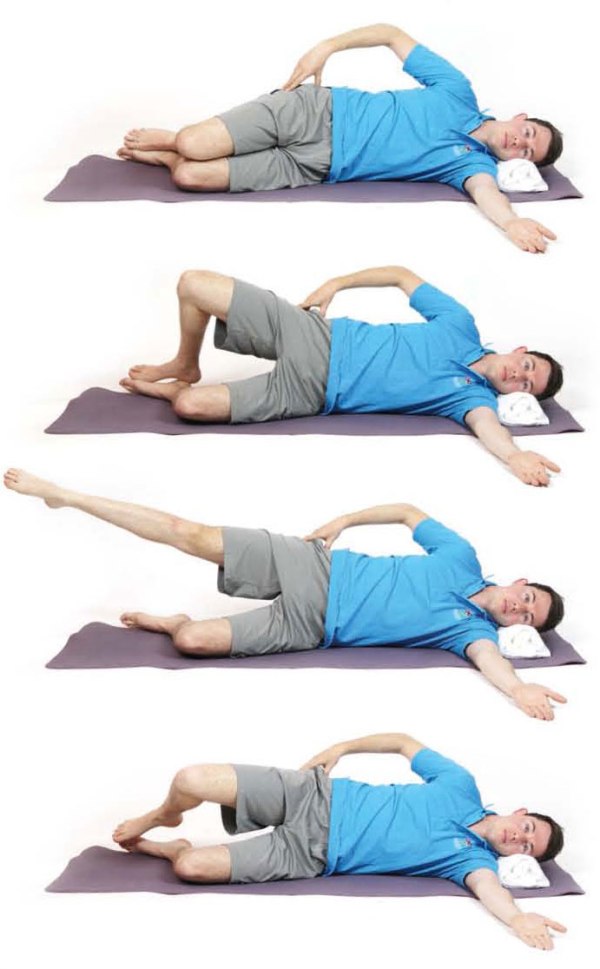
Lying on your side, with a folded-towel pillow, put your hand on your hip to feel the glute activating. Keeping your feet together, lift your top knee as far as possible away from the other one. Now extend your leg straight before reversing the process. For more work, when your leg is extended, make circles with your foot, one way and then the other.
Turn to the other side and repeat.
Leg lifts
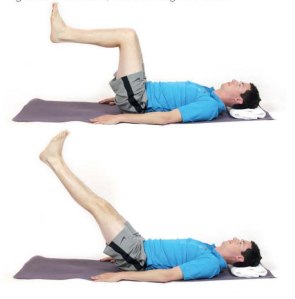
Lie on your back with a folded-towel for a pillow and your knees bent. Roll your shoulders back and down and place your arms beside you. Lift your knees to be directly above your hips. Check the natural arch under your lower back. Maintaining this natural arch, extend your legs straight. Hold, then return to knees bent. To increase the work, extend your legs lower to the ground. However, do not lower your legs past the point where you lose the natural arch under your lower back. For a gentler version, lift one leg at a time.
Bridge
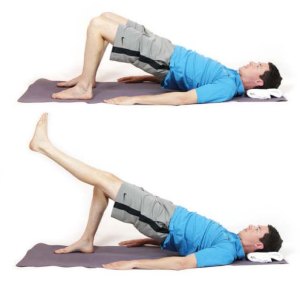
Lie on your back again, keep your feet on the ground and lift your hips. Keep your knees hip-width apart and hold the lift. For added difficulty, extend one leg and hold, and then repeat with the other leg. In between repetitions you can counter stretch by drawing your knees tightly in to your chest.
Locust
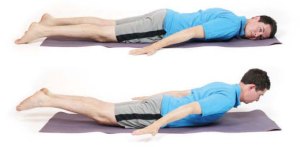
Place a folded towel under your hips and lie on your belly with your arms beside you. Touch your big toes together, extend through the crown of your head and lift your chest, arms and legs off the floor. Reach strongly through your legs, keeping the big oes touching. Tuck your chin and extend through the crown of your head. Raise your arms parallel to the floor and stretch back through your fingertips. Remember to breathe.
Kneeling forward bend

Kneel with your knees just wider than hip-width and your big toes touching. Reach back with your buttocks to sit on the heels. Maintaining that grounding of the buttocks, fold forward, placing your hands shoulder-width apart in front of you. Let your head release to the floor or to a folded towel for support. Feel your muscles relax with each exhalation.
Ride On content is editorially independent, but is supported financially by members of Bicycle Network. If you enjoy our articles and want to support the future publication of high-quality content, please consider helping out by becoming a member.

Reblogged this on BikeNCA.
These are great moves to use and practice in developing a strong core. Also, it’s best to make sure to have a proper mat in place to support and protect you from injury. Plus, it helps make the workout more productive! Thanks for sharing!